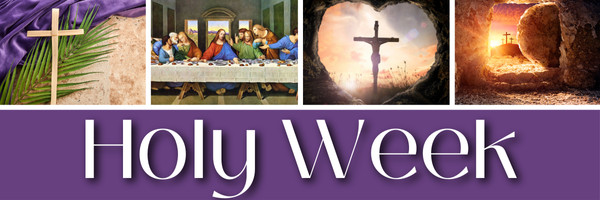 Dear readers, Catholic Online was de-platformed by Shopify for our pro-life beliefs. They shut down our Catholic Online, Catholic Online School, Prayer Candles, and Catholic Online Learning Resources essential faith tools serving over 1.4 million students and millions of families worldwide. Our founders, now in their 70's, just gave their entire life savings to protect this mission. But fewer than 2% of readers donate. If everyone gave just $5, the cost of a coffee, we could rebuild stronger and keep Catholic education free for all. Stand with us in faith. Thank you. Help Now >
Dear readers, Catholic Online was de-platformed by Shopify for our pro-life beliefs. They shut down our Catholic Online, Catholic Online School, Prayer Candles, and Catholic Online Learning Resources essential faith tools serving over 1.4 million students and millions of families worldwide. Our founders, now in their 70's, just gave their entire life savings to protect this mission. But fewer than 2% of readers donate. If everyone gave just $5, the cost of a coffee, we could rebuild stronger and keep Catholic education free for all. Stand with us in faith. Thank you. Help Now >
Parishes Preparing for Divine Mercy Sunday
"....When they say this Chaplet in the presence of the dying, I will stand between My Father and the dying not as the just judge but as the Merciful Savior." This Sunday now has an even greater focus, based on the devotion of St. Faustina Kowalska of Poland to Divine Mercy. With the Second Sunday of Easter now Divine Mercy Sunday, faithful Catholics will be gathering in their parishes to pray the Chaplet of Divine Mercy. Services are normally held at the "hour of mercy," 3:00pm in the afternoon, which is the hour that Jesus died.
Highlights
Catholic Online (https://www.catholic.org)
4/10/2010 (1 decade ago)
Published in Lent / Easter
WASHINGTON, DC (Catholic Online) - This Sunday concludes the Octave of Easter, the eighth day of our special feast of the resurrection of our Lord Jesus Christ and the second Sunday of our Easter Season.
This Sunday now has an even greater focus, based on the devotion of St. Faustina Kowalska of Poland to Divine Mercy. With the Second Sunday of Easter now Divine Mercy Sunday, faithful Catholics will be gathering in their parishes to pray the Chaplet of Divine Mercy. Services are normally held at the "hour of mercy," 3:00pm in the afternoon, which is the hour that Jesus died.
Divine Mercy Sunday really began with a young Polish teenager, Helena Kowalska, who had felt called to religious life and tried to enter a number of convents. Finally, she was accepted by entered the Congregation of the Sisters of Our Lady of Mercy whose members devote themselves to the care and education of troubled young women. Entering the convent when she was almost twenty, Faustina made her profession as a nun at age twenty-one, in 1926.
During the early 1930´s, Sister Faustina received a number of appearances and visions of Our Lord and His Blessed Mother. During her early visitations from Jesus, he revealed to her that her purpose on earth was to bring about a devotion to His Divine Mercy; she was to be an apostle and secretary of God´s mercy. She was to demonstrate mercy and call attention to His purposes of mercy for the world.
Much of what we know about Saint Faustina and Divine Mercy are found in the pages of her diary.
On February 22, 1931, Jesus Christ appeared to her, bringing a message of God´s mercy for the world. She wrote in her diary:
"In the evening, when I was in my cell, I became aware of the Lord Jesus clothed in a white garment. One hand was raised in blessing, the other was touching the garment at the breast. From the opening of the garment at the breast there came forth two large rays, one red and the other pale. In silence I gazed intently at the Lord; my soul was overwhelmed with fear, but also with great joy. After a while Jesus said to me, 'paint an image according to the pattern you see, with the inscription: Jesus, I trust in You.'"
At a later time, the Lord explained some of the meanings involved in his appearance:
"The pale ray stands for the Water which makes souls righteous; the red ray stands for the Blood which is the life of souls. These two rays issued forth from the depths of My most tender Mercy at that time when My agonizing Heart was opened by a lance on the Cross....Fortunate is the one who will dwell in their shelter, for the just hand of God shall not lay hold of him."
Four years later, in 1935, he revealed to her the Chaplet of Divine Mercy, a series of prayers prayed using Rosary beads, and said, "....When they say this Chaplet in the presence of the dying, I will stand between My Father and the dying not as the just judge but as the Merciful Savior."
Concerning a Sunday for Divine Mercy, she wrote in her diary, "On that day the very depths of My tender mercy are open. I pour out a whole ocean of graces upon those souls who approach the fount of My mercy. The soul that will go to Confession and receive Holy Communion shall obtain complete forgiveness of sins and punishment. On that day all the divine floodgates through which grace flow are opened. Let no soul fear to draw near to Me, even though its sins be as scarlet. My mercy is so great that no mind, be it of man or of angel, will be able to fathom it throughout all eternity."
In 1936, Faustina became ill with what was probably tuberculosis. Though dealing with disease, she spent as much time as possible praying the Chaplet for Divine Mercy and for the conversion of souls. She also continued to write in her diary.
By June of 1938, she could no longer write and died four months later, on October 5. When Faustina's superior was cleaning out her room she opened the drawer and found the paintings of the Divine Mercy.
At the time of her death, all of her writings were sent to Rome for review, as they contained reports of her visions with Jesus and Mary.
Her writings were the subject of a great deal of controversy at the Vatican and, for twenty years, were included in the list of "Forbidden Books."
When Karol Wojty³a (who became Pope John Paul II) was installed as the Archbishop of Kraków in the 1960´s, he re-opened the investigation of Saint Faustina and her writings, which brought about a different conclusion. This led to a revitalization of devotion to Divine Mercy.
Observation of a Sunday for Divine Mercy was observed sporadically in a number of places over the years that followed.
However, on April 30, 2000 Pope John Paul II canonized St. Maria Faustina of the Blessed Sacrament and designated the Second Sunday of Easter each year as Divine Mercy Sunday. The pope had always had a special devotion to St. Faustina and Divine Mercy.
In his homily for Divine Mercy Sunday, 2005, the Holy Father said, "It is the appropriate and incisive answer that God wanted to offer to the questions and expectations of human beings in our time, marked by terrible tragedies. Divine Mercy! This is the Easter gift that the Church receives from the risen Christ and offers to humanity."
He died on the Vigil of Divine Mercy Sunday in 2005.
-----
Randy Sly left ministry as an Archbishop of the Charismatic Episcopal Church years ago to come into the full communion of the Catholic Church. He is the Associate Editor of Catholic Online.
---
'Help Give every Student and Teacher FREE resources for a world-class Moral Catholic Education'
Copyright 2021 - Distributed by Catholic Online
Join the Movement
When you sign up below, you don't just join an email list - you're joining an entire movement for Free world class Catholic education.

-

- Stations of the Cross
- Easter / Lent
- 5 Lenten Prayers
- Ash Wednesday
- Living Lent
- 7 Morning Prayers
- Mysteries of the Rosary
- Litany of the Bl. Virgin Mary
- Popular Saints
- Popular Prayers
- Female Saints
- Saint Feast Days by Month
- Pray the Rosary
The surprising origins of the Easter Bunny — it’s not what you think!
The Way of the Cross: A Good Friday Reflection on Christ’s Final Journey
The Many Reasons Why We Call it Good Friday
Daily Catholic
 Daily Readings for Sunday, April 20, 2025
Daily Readings for Sunday, April 20, 2025St. Marian: Saint of the Day for Sunday, April 20, 2025
 Children's Prayer For Parents: Prayer of the Day for Sunday, April 20, 2025
Children's Prayer For Parents: Prayer of the Day for Sunday, April 20, 2025 Daily Readings for Saturday, April 19, 2025
Daily Readings for Saturday, April 19, 2025 St. Alphege: Saint of the Day for Saturday, April 19, 2025
St. Alphege: Saint of the Day for Saturday, April 19, 2025- Stewardship Prayer: Prayer of the Day for Saturday, April 19, 2025
![]()
Copyright 2025 Catholic Online. All materials contained on this site, whether written, audible or visual are the exclusive property of Catholic Online and are protected under U.S. and International copyright laws, © Copyright 2025 Catholic Online. Any unauthorized use, without prior written consent of Catholic Online is strictly forbidden and prohibited.
Catholic Online is a Project of Your Catholic Voice Foundation, a Not-for-Profit Corporation. Your Catholic Voice Foundation has been granted a recognition of tax exemption under Section 501(c)(3) of the Internal Revenue Code. Federal Tax Identification Number: 81-0596847. Your gift is tax-deductible as allowed by law.



 Daily Readings for Sunday, April 20, 2025
Daily Readings for Sunday, April 20, 2025 St. Marian: Saint of the Day for Sunday, April 20, 2025
St. Marian: Saint of the Day for Sunday, April 20, 2025 Children's Prayer For Parents: Prayer of the Day for Sunday, April 20, 2025
Children's Prayer For Parents: Prayer of the Day for Sunday, April 20, 2025 St. Alphege: Saint of the Day for Saturday, April 19, 2025
St. Alphege: Saint of the Day for Saturday, April 19, 2025

